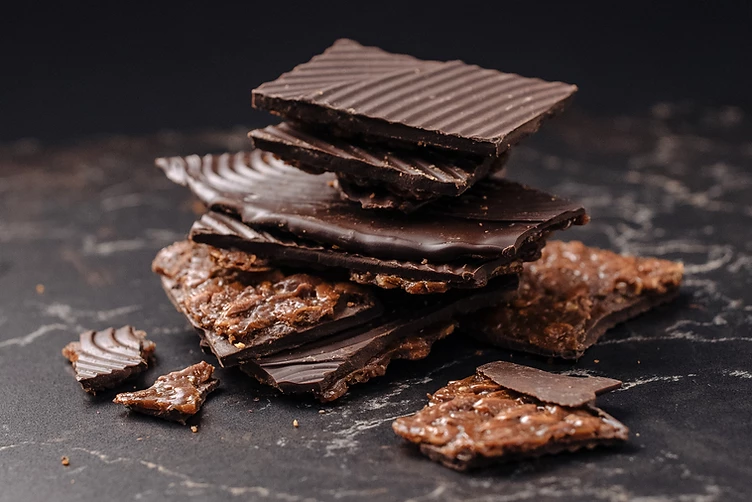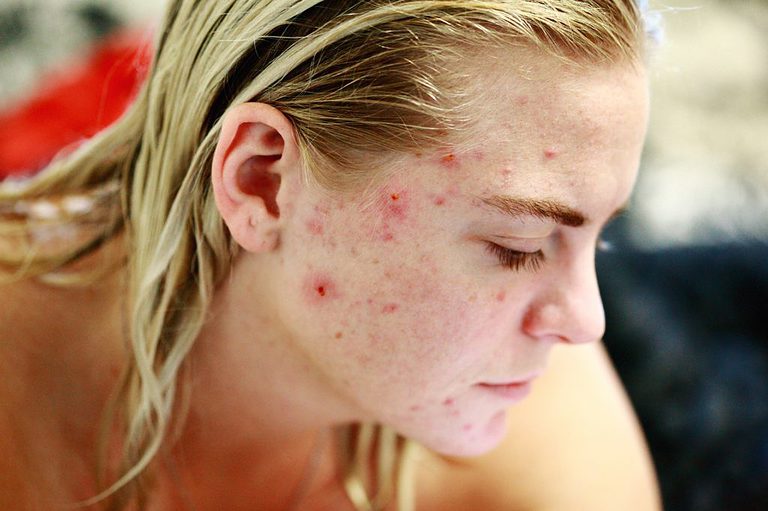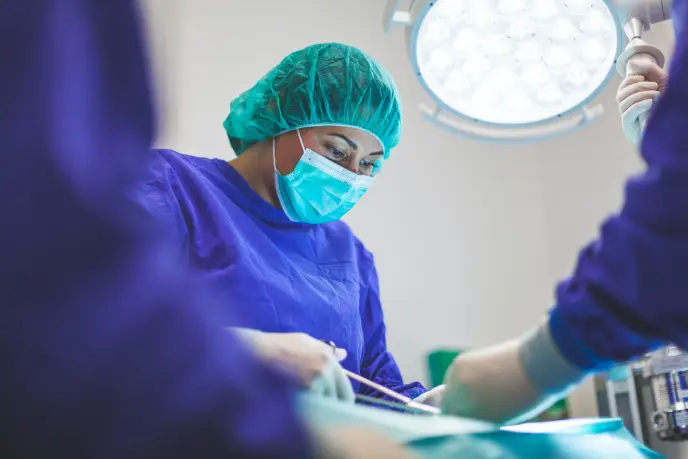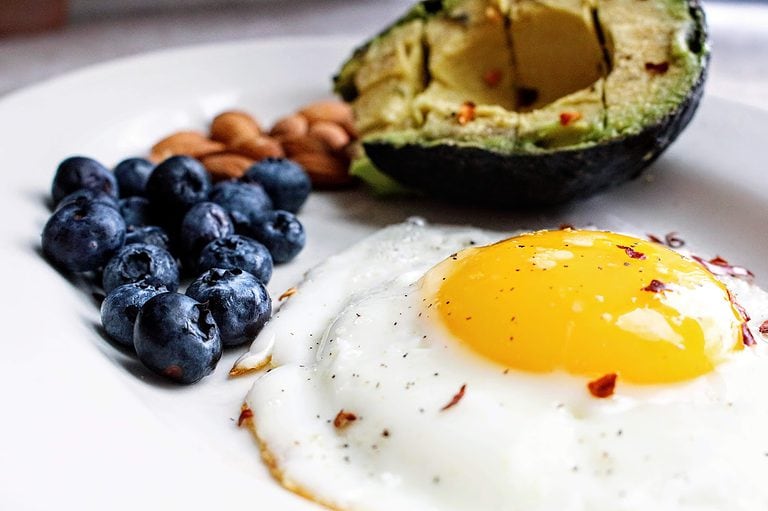Migraine headaches affect about 10-20% of the worldwide population and can be a very distressing neurological disorder. A migraine is characterised by one-sided throbbing or pulsating headache that is aggravated by physical activity. Migraines are also associated with other symptoms such as nausea and vomiting, increased light, sound and smell sensitivity. These headaches can last for hours to days and can be so debilitating it can really impact both your work and social life.
So what’s the link between these intense headaches and diet? And more importantly, what’s chocolate got to do with it?!
I review the evidence about the role of different food chemicals, nutrients, foods and supplements in preventing and/or managing this painful vascular headache.
BONUS: I’ve got physiotherapist Michael, from Limp In Leap Out Physiotherapy, to comment on how to manage tension headaches using physiotherapy.

Food Chemicals: Amines
Amines are the result of proteins in food being broken down. Some people are sensitive to amines, which means these food chemicals irritate nerve endings in the blood vessels causing them to expand and constrict rapidly which can be a contributor to migraines.
Amine content is higher in mature or ripe products such as cheese, meat wine and fruit. Yes your beloved chocolate, cheese, wine, olive oil and also bananas, avocados, mushrooms, meat and fish, nuts and seeds all contain high levels of amines. Yep, it’s a long list of actually really nutritious foods (and delicious ones too).
Amines are hard to eliminate from the diet and to determine whether you’re sensitive to this food chemical (or others) a dietitian and medically-supervised elimination diet is required. This is because it compromises your nutritional status – please do NOT do this on your own!
Dietary Patterns: Ketogenic Diet
Whoah there! Have to say I didn’t think I’d expect to see those two words on my blog. The ketogenic is highly restrictive, and eliminates almost all sources of carbohydrate from the diet (our body’s preferred fuel source) to induce a state of ketosis. Or switching to fat burning. The idea is to eat fat to burn fat. I won’t get into my opinions on “going keto” and we’ll just take a look at the evidence for going keto for migraine management.
The ketogenic diet is actually an evidence-based medical therapy for children with refractory epilepsy and is gaining lots of attention in the neurology world. As migraines are characterised by the inflammation of the brain’s membrane, it is believed that the ketogenic diet may have an impact on various stages of the migraine process and stabilise it providing relief and even claims of relief even after discontinuing the diet.
However, the quality of evidence is poor mostly being from case reports. Further research is needed to determine whether this dietary pattern would provide symptom relief to migraine patients. As well, we must consider the overall impact this dietary pattern would have on other aspects of health. At this point in time, I would be hesitant to recommend the ketogenic diet for the treatment of migraines (or for most other conditions with insufficient evidence of its efficacy).
Dietary Patterns: Low Glycaemic Index
Glycaemic Index (GI) is a system of ranking carbohydrate-containing foods based on how quickly the carbohydrate raises your blood sugars. Low GI foods such as apples, stonefruit, wholegrain products, pasta and Basmati rice are associated with a slower release of sugars into the bloodstream, keeping you fuller for longer. This is generally because of the fibre content of the food which slows down how quickly your body digests carbohydrates.
One trial has shown that people with migraines who followed a low GI diet compared to those managed with medications, both saw a reduction in the intensity of the pain associated with migraines and the frequency of the attacks after 90 days!
Whilst we cannot make recommendations based off one study, a low GI diet has many other health benefits including helping to manage blood sugars in diabetes and pre-diabetes, as well as weight loss. It could be worth a try to see if it reduces your migraine attacks and intensity of symptoms, as it poses little risk to other aspects of health and is generally encouraged for most people to improve diet quality.
More about how to swap to low GI foods

Supplements: Magnesium
Magnesium is an essential mineral that is responsible for optimal muscle function, bone health and for hundreds of enzymes in the body. Magnesium supplementation of 600 mg/day of trimagnesium dicitrate for adults has shown some evidence to help prevent migraines. Again, this dosage is about double what you need each day and exceeds Australian upper limits for this mineral. Keep in mind the side effects of a potential tummy upset.
The mechanisms for how this works are quite metabolically complex ranging from a role in calcium and mitochondrial metabolism to contributing to a reduction in neuroinflammation. Whilst the evidence is mixed, there’s generally little harm in supplementing the mineral (or just eat more foods rich in magnesium) for a potential benefit. I’m all about food first, so see a dietitian who can help you improve your food sources of magnesium in your diet
Do not start magnesium supplements if you have compromised kidney function.
Always consult a healthcare professional before starting a supplement.
Supplements: Thiamin & Riboflavin (B-vitamins)
Thiamin (or vitamin B1) is found in breads, cereals, cheese, tuna and seafood, chicken and nuts and seeds. However, thiamin intake was not associated with reduced migraine attacks.
Riboflavin (or vitamin B2) found in dairy products, lean meats and eggs as well as green vegetables. Studies show about 400 mg of riboflavin can reduce migraine frequency in adults (evidence isn’t as good in children and adolescents). This is a huge dose as we only need about 1 mg a day of riboflavin! Riboflavin supplementation works by improving energy production from the mitochondria of your cells which may help prevent migraines.
If you do go down the riboflavin supplementation path, make sure you purchase one that has an opaque container and store it in a dark place as this vitamin is light-sensitive!
Always consult a healthcare professional before starting a supplement.
Nutrient: Omega-3 Fats
Omega-3 fatty acids have anti-inflammatory properties. Omega-3s can be found in oily fish (salmon, trout, herring) as well as nuts and seeds (walnuts and chia seeds). It is believed that increasing omega-3 intake relative to omega-6s will reduce the stimulation of pain receptors and therefore reduce the severity of migraine symptoms.
However, studies are yet to be finished and therefore there is insufficient evidence to support this. But, omega-3s are awesome for your body so there’s no harm in upping your omega-3 intake.

What about non-dietary management?
Explained by Michael (Physiotherapist) from Limp in Leap Out Physiotherapy
With migraines lasting from hours to days, the body is under a lot of pressure to resolve the symptoms. During this time, the aponeurosis galea (a thick band across the top of the head), becomes tense, tight and taut. The trapezius muscle (a muscle on both sides of the shoulders), can also become tight. A combination of the tightness an therefore contribute to a Tension Headache.
Physiotherapy can assist with tension headaches through applying to pressure to essential structures on your neck to help alleviate the tension headache and therefore reduce the overall intensity of the migraine.

Be sure to consult a health care professional (an Accredited Practising Dietitian and/or a Physiotherapist and your GP) before making changes to your diet and lifestyle, to ensure these changes are safe and effective for you and your exact needs.
References
Credit to my good friend and fellow dietitian, Emalie Sparks, for helping me write this blog post, she’s my go-to when it comes to all things food intolerance
- Headache Australia (Division of the Brain Foundation): http://headacheaustralia.org.au/
- Barbanti, P., Fofi, L., Aurilia, C., Egeo, G. and Caprio, M. (2017). Ketogenic diet in migraine: rationale, findings and perspectives. Neurological Sciences, 38(S1), pp.111-115.
- Evcili, G., Utku, U., Ogun, M. and Ozdemir, G. (2018). Early and Long Period Follow-up Results of Low-Glycemic Index Diet for Migraine Prophylaxis. Ağrı – The Journal of The Turkish Society of Algology, 30(1), pp.8-11.
- Faraji, H., Paknahad, Z. and Chitsaz, A. (2018). Dietary Intake of Thiamine in Migraine Patients and Healthy Subjects: a Case-Control Study. Clinical Nutrition Research, 7(1), p.40.
- Mann, J., Faurot, K., MacIntosh, B., Palsson, O., Suchindran, C., Gaylord, S., Lynch, C., Johnston, A., Maiden, K., Barrow, D., Hibbeln, J. and Ramsden, C. (2018). A sixteen-week three-armed, randomized, controlled trial investigating clinical and biochemical effects of targeted alterations in dietary linoleic acid and n-3 EPA+DHA in adults with episodic migraine: Study protocol. Prostaglandins, Leukotrienes and Essential Fatty Acids, 128, pp.41-52.







